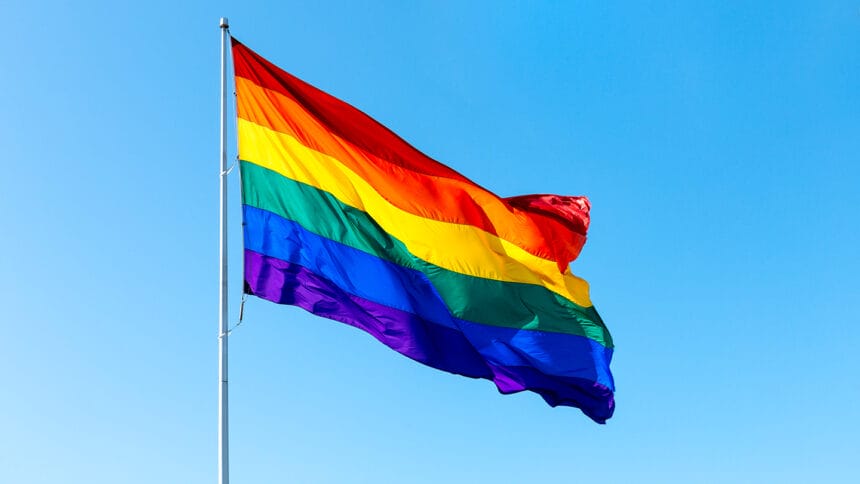LGBTQ+ older adults are one of the fastest emerging populations in senior living, presenting both opportunities and challenges for providers, according to a legal expert.
During a recent webinar from national law firm Hinshaw & Culbertson offering culturally appropriate care and services to LGBTQ+ older adults, partner David Alfini outlined special considerations that LGBTQ+ senior living residents bring and proactive approaches that providers can take to create an inclusive environment for all residents.
An estimated 2.7 million to 3 million adults 50 and older identify as LGBTQ+, according to LGBTQ+ elder advocacy group SAGE. Its National LGBTQ+ Housing Initiative estimates there will be 7 million LGBTQ+ older adults by 2030.
“This presents a great opportunity for senior living,” Alfini said. “This is a new demographic, a new consumer and a new possibility of residents.”
Alfini said that LGBTQ+ older adults — particularly gay men who died in the 1980s and 1990s during the AIDS epidemic — weren’t part of the demographic the senior living industry was serving in recent decades. With advances in medicine, however, those individuals are living longer and are more comfortable being openly gay today, he said.
At the same time, the LGBTQ+ population shares a collective history that makes them skeptical of what the senior living industry has to offer, Alfini said. Today’s LGBTQ+ older adults, he added, experienced institutionalized discrimination with respect to healthcare, legal status, employment and housing most of their young life and into adulthood.
Older adults turning 65 this year (born in 1959) were alive during the 1969 Stonewall Riots in New York, considered the beginning of the LGBTQ+ rights movement in the United States. They also lived the first 14 years of their life being told that their sexuality was a mental disorder, until the American Psychiatric Association in 1973 removed homosexuality from the list published in its “Diagnostic and Statistical Manual of Mental Disorders.”
Those experiences, Alfini said, lead to a sense of vulnerability and discrimination with authority figures or institutions, including the senior living industry. When looking at choices for senior living, LGBTQ+ older adults are skeptical consumers, he added.
Putting a pride flag on the bottom of a brochure isn’t enough, Alfini said, adding that providers should be showing various activities, including nondiscrimination statements and picturing same sex couples in their marketing materials. Posting information and images on social media that showcase how a community welcomes LGBTQ+ residents can go a long way in reassuring prospective LGBTQ+ residents, he said.
“This fear of going back into the closet in senior living is prevalent,” Alfini said. “Making sure that when you’re presenting your community that this is not a place someone would need to do that because they are being seen and heard is so important.”
Avoiding resident rights violations
Violations of resident rights are contained in almost every complaint Alfini said he files on behalf of residents. Platinfiffs who can prove that their rights were violated not only can claim attorney’s fees, and providers can face serious penalties in addition to fines, he said.
As an industry that “lives and dies on its policies and procedures,” staff training is of utmost importance, particularly when it comes to LGBTQ+ residents, Alfini said. Issues of insensitivity oftentimes are just a lack of knowledge or understanding around the wants and needs of LGBTQ+ residents, he added.
In California, Alfini said, the Lesbian, Gay, Bisexural and Transgender Long-Term Care Facility Residents’ Bill of Rights contains two provisions that are the source of most litigation: the assignment and ability of transgender residents to request changes in their room assignments, and the use of preferred pronouns or names by a resident.
A case pending before the California Supreme Court is challenging the provision protecting residents from a community’s or facility’s refusal to use their preferred names and pronouns. The organization Taking Offense challenged the pronoun provision and lost, but the ruling was reversed on appeal in 2021. The California Supreme Court accepted the case for review and is expected to issue an opinion later this year.
Embracing the LGBTQ+ population
The 2023 Long-Term Care Equality Index from SAGE and the Human Rights Campaign Foundation reported that 200 communities from 34 states actively participated in the LEI 2023 survey. And the HRC’s Corporate Equality Index now boasts more than half of Fortune 500 companies as adopters.
Those points, Alfini said, are looked at by LGBTQ+ individuals when they are researching a senior living community.
Chad Boeddeker, executive director of Westmont of Carmel Valley, a senior living community in Carmel Valley, CA, told webinar attendees that what’s important to LGBTQ+ older adults is being with people who have similar values. They are also looking for wellness and care offerings that cater to their lifestyle, he said.
The LGBTQ+ community experiences a slightly higher prevalence of Alzheimer’s and dementia-related diagnoses, which could be attributed to their medical history or lack of appropriate medical care in the past, Alfini said. The population also has a higher prevalence of addiction, he said.
Alfini said providers should ensure that their admissions counselors are comfortable answering questions about the welcoming nature of a community. Having a self-disclosure form, similar to one about race and religion, regarding membership in the LGBTQ+ community, can help facilitate those conversations, he said.
“Be prepared for their questions,” Boedekker said.
Other residents’ responses when an LGBTQ+ resident moves into a community is another challenge for providers, according to the webinar speakers. Dealing with the “mean kids,” Boedekker said, involves educating them about discrimination and inclusivity. Providers, he added, can educate residents in the same way they educate staff members about what it means to be LGBTQ+.



